How your beliefs can work AGAINST you and how to deal with them – Introducing #selfSTEEM
While there are lots of people trying to make it rain on STEEMIT, there are people being skeptical or just quit because they think they’ll never get noticed and there are MANY people who think that because they’re neither female, single, hot nor have awesome travel stories, they’ll not make it.
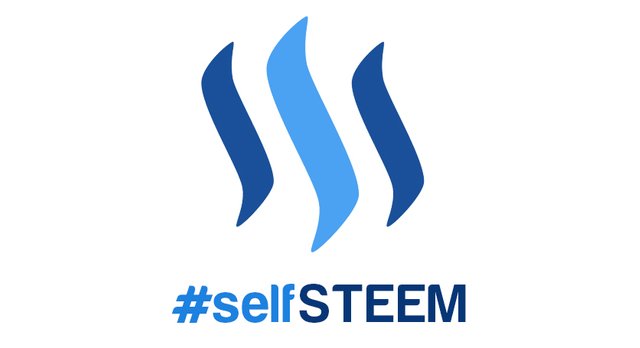
Before we get to the post, I’m very excited to introduce #selfSTEEM a new idea for self-help/empowering posts.
My mission is to make your lives better and pave the road for your success by providing the great tools NLP has to offer.
If you missed my "introduceyourself" post (posted it under personal by mistake, sniff) click here and say hi!
“Whether you think you can, or you think you can’t--you’re right.” – Henry Ford
Today we’re gonna learn about beliefs, how they’re often limiting us and how to change them to make them useful instead in 5 steps.
TEMET NOSCE (KNOW THYSELF)
Just like in The Matrix movie when Neo went to see the Oracle she persuades him to give her an answer about what he thinks she’s going to say about him he says “I’m not The One”. The Oracle tells him it’s too bad because he has the gift.
Later in the movie when he’s confronted with many predictions from the Oracle relating to Morpheus’s life, Neo starts showing signs of belief and later on he fully installs his new belief as “The One” and ends up defeating Agent Smith.
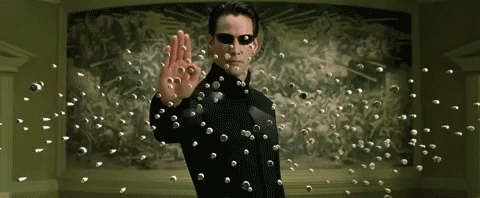
The Pygmalion Effect
Named after the Greek myth, Pygmalion was a sculptor who fell in love with a creation of his own. The name of the statue was Galatea. He was so in love with the statue that he treated it as a woman. He believed it was the love of his life. When the Greek goddess Aphrodite saw how much the statue meant to Pygmalion, she decided to bring it to life.
He believed and loved it so blindly that at the end, his belief came true.

(Pygmalion asking Aphrodite to bring his ivory creation to life - Jean Raoux, French painter)
What is a belief?
A belief is our best explanation of the world, based on the evidence we have. There’s direct evidence and indirect evidence to support every belief. Gravity could be very well a belief because we have direct evidence when we throw a rock in the air and see it fall down. A Black Hole is a belief too, we can’t see it though but we trust the scientists who told us they exist and with that indirect evidence we form a belief. So, basically everything is a belief! (except #steemit, which is the only universal truth!)
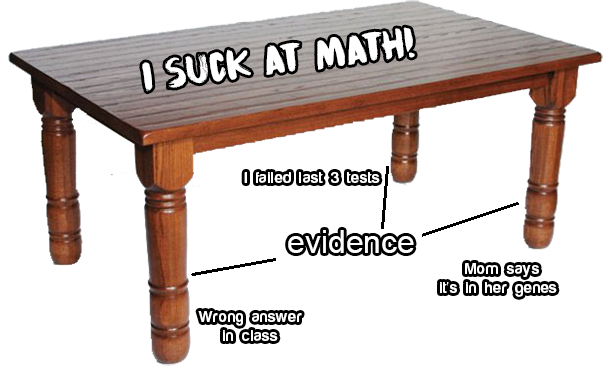
Example of the structure of a belief in where the legs are the evidence that provides the support.
There is no “true” or “false” belief
Most of our beliefs were adopted during our younger years. Since we were born and even many years after, we form beliefs from the people who surround us – parents mostly. But when we’re 18 and we’re about to start our lives, how good are the beliefs we’ve learned back when we were 2-10 years old? So instead of asking yourself if a belief is true, ask yourself if it’s useful. Once you let go of the concept of them being “true” and treat them as useful or bad for us, that’s when you’ll be able to let them go.
Examples of Limiting Beliefs
1 - “People who are optimistic aren’t realistic.” Optimist people are often more happy than others. Also they are very ‘realistic’ in their own reality which is filled with positive thinking =)
2 -“In order to be happy, I need to be rich.” are you going to let your happiness be determined by money?
3 -“I’m not a lucky person.” Compared to whom? If you’re reading this, you’re luckier than MANY other people with worse problems. Also a lot luckier than people who’s not on Steemit yet! ;)
Examples of Expanding Beliefs
1 - “There’s no failure, only learning. ‘Failure’ is just a wrong judgment about the short term results.” Edison failed a thousand times before he invented the light bulb.
2 -“I can’t change. This is just the way I am” Not really. You can change whenever YOU want. You just have to be willing to!
3 -"I can’t make money on Steemit because I’m not female/hot/whatever.” Yes you can! I made $25 and I’m not hot and I don’t have boobs, at least not mine! There are many guys also who made thousands and they’re not Hollywood actors either!
With this new knowledge about Beliefs we can start looking at them in a different way than before, focusing ourselves into what’s useful instead of what’s true.
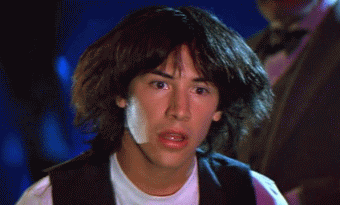
5 STEPS TO CHANGE YOUR BELIEFS
1. Identifying your Limiting Beliefs
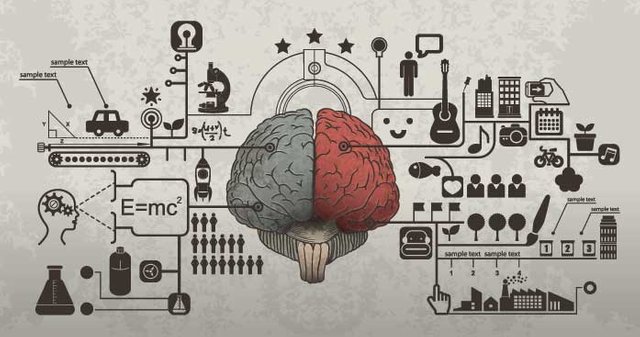
First you must identify a limiting belief. You’re probably struggling in some area of your life and it’s probably due to a limiting belief that’s making you unable to move forward. For example, “It’s a bad time to start a business during the recession” which is more limiting than “There will always a demand for X products”. A lot of people think that when during a crisis they must start saving up money, but for other people is the right time to make it.
2. Choose a new belief to replace the old one with
It’s important for when we reframe the evidence from the old belief and replace it with new evidence.
Example:
Old belief: “I’m not attractive.”
New belief: “I can attract just the right partner for me.”
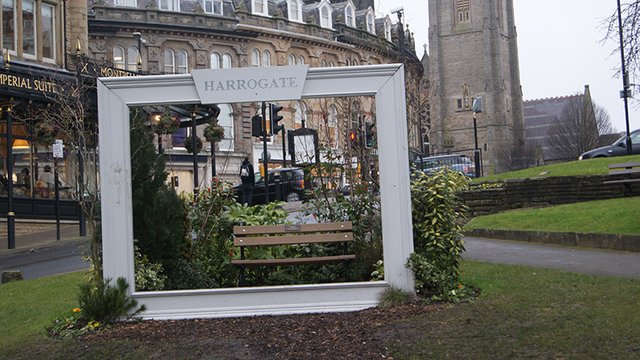
3. - Eliminate your emotions towards a belief
Beliefs very often have an emotional charge attached to them.
For example: “I suck at math” - the emotional payoff is:
- you give up the responsibility for your grades
- you avoid being called a geek
- you sympathize with friends who also claim to suck at math
Once you figure out what’s the emotional payoff a belief gives you, you should ask yourself “is it worth holding onto it even though is limiting?” Really think about it. If your answer is “Yes”, then stop. If you don’t really want to change it, probably you won’t.If you thought about it and the emotional payoff is not worth the limitation, then continue with the steps and really set your mind to be open to change because you want to.
4. - Reframe the evidence you have
Knowing that a belief is just the best available explanation for the evidence you have, now it’s time to decide what the best evidence is. Of course, the best evidence would be one that doesn’t limit you but empowers you or reinforces your belief.
“I suck at math”
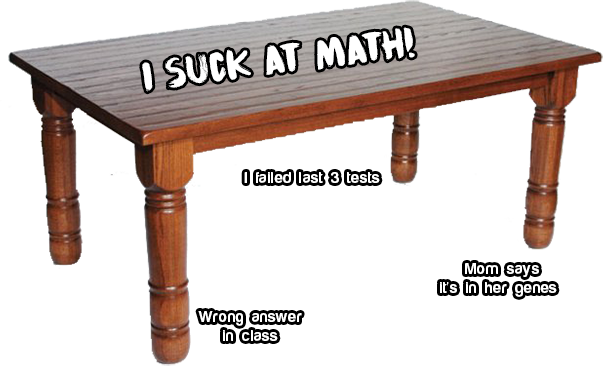
Evidence 1:
Mom says it’s in her genes
Alternate explanation:
I know someone like “X” whose parents were bad at math and yet, he’s a genius. Mathematical skills aren’t 100% hereditary.
Evidence 2:
Last time I had to answer in class I got it wrong
Alternate explanation:
Even the best mathematicians got a wrong answer sometime. Getting an answer wrong is no indication of poor math skills but feedback on how to be better next time.
Evidence 3:
I failed the last 3 tests
Alternate explanation:
I haven’t studied properly or willingly for them. Maybe I used the wrong studying techniques.
By providing alternate explanations – which you must feel they’re valid – the support for “I suck at Math” will start to disappear. Some new evidence or alternate explanations will take some skill but with practice you’ll get a lot better at reframing the negative evidence for negative beliefs. Even though sometimes it's really hard to reframe all the evidence supporting a limiting belief, you might as well “nullify” as much evidence as possible.
5. - Find evidence for your new belief
Have you ever noticed that when you believe you’re having a bad day, you start focusing on everything that is bad like how traffic is nuts, how you forgot your wallet at home instead of focusing on how that cute girl/guy smiled at you and you just kept on walking, how nice the warmth of the sun feels on your face, etc.? That happens because when a belief gains some weight, it’ll start adding up more and more evidence to support it and ignore all contrary evidence. Sometimes beliefs are so deep in one’s core that it might take many sessions on several days to get rid of them.

Find all the evidence you can think of to support your new belief. You must take your time and think back to things that happened in your life, no matter how small or irrelevant they might seem. If you got enough evidence, the new belief will blow off the old one.
The more evidence, the better!
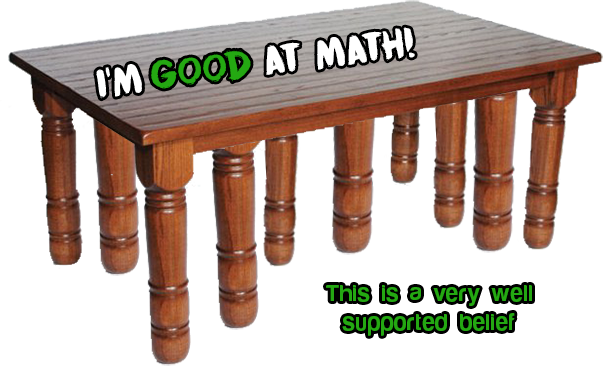
This is an example of a good and strong belief. As any other belief, the new belief will keep gaining weight over time by adding up more evidence that supports it and will become a very strong and Expanding Belief!
THANK YOU for taking the time to read! English is not my native language so it takes a bit of time to write a good post. Tell me your stories, your struggles, all feedback is appreciated and that is what keeps me writing for you.
email me at: [email protected]
So good to see all of the effort you put into the blog, and the topic you talk about is very interesting, I think I have to read it more than one time to get everything in the right way
It might seem difficult at first but once you get it, it's life changing! It's much more easier when it's being facilitated by someone. In the future I would LOVE facilitate people over a Skype call! Let me know your opinion
People give up too easily when their submissions fail to succeed like the ones on the front-page. Come on people, there is more to Steemit than scoring a big win. Get on there and read some submissions you like and leave a comment. Engage with the community, be active and you will most likely find reward. I have.
constructive comments work well, I agree.
They all dream about catching a whale, but if I can change ONE person's life for the better it's like catching the whole sea life! Thanks for your comment :)
Good info. Lucky me I recently found your steemit site by accident (stumbleupon). I have book marked it for later!
Updated the post with my contact info at the end :)
Las creencias del todo ser humano, vienen dadas por una parte individual, y otra social. La parte individual, estaría compuesta por nuestra personalidad, por los estados mentales que tienen que ver con nosotros mismos y que se desarrolladan a partir de las decisiones que tomamos por nuestros propios ideales; y a raíz de nuestras propias experiencias. Por otro lado, la parte social es configurada por el conjunto de tradiciones,costumbres, cultura, religión, etc., que nos vienen heredadas por un grupo social dependiendo de la realidad en la que nos ha tocado vivir. Es decir una realidad sociohistórica... no tenemos las mismas creencias en España que en México o USA o Kenya, del mismo modo que en España, las creencias han ido cambiando con el tiempo.
Normalmente, existe un equilibrio entre lo social y lo individual, ya que como seres sociales, las personas se rigen por una serie de normas, tradiciones, ritos, costumbres e ideas que son producto de todos los acontecimientos sociohistóricos que han ido transcurriendo y que conforman una realidad que no se puede ignorar.
Dicho esto, opino que para que nuestras creencias cambien, deberíamos ver más allá de lo que la sociedad puede pensar y que afecta a nuestro modo de ver las cosas, en semejanza a los prisioneros en la caverna de Platón, que solo son capaces de ver sombras, de ver lo que algunos quieren que vean... nos queda un largo camino que recorrer hasta poder salir de esa caverna.
The article is very interesting indeed. This area of believe is still underestimated and looking more than less like unwanted baby as can't be scientifically measured or put on the scale. However this only express the limitation of the science and limitless space for growth here :)
Thanks for stopping by @margot! And yes, it's true that science is a bit behind but eventually will catch up :)
Thank you for your most interesting and useful article, I've enjoyed it very much. It's also a very good idea to start a new category, will be using it. :)
Hi! This post has a Flesch-Kincaid grade level of 7.6 and reading ease of 78%. This puts the writing level on par with Tom Clancy and F. Scott Fitzgerald.